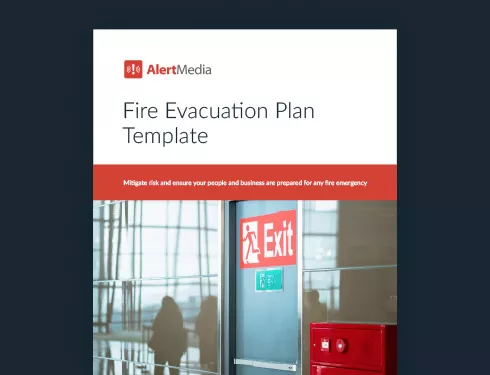
Emergency drills save lives. If it’s your duty to keep employees safe, prepare them to follow the plan.
Create or optimize your fire drill procedure with these five steps.
Fire Evacuation Plan Template Equip your team to handle a fire with a carefully planned exit strategy.
In the event of a fire, every second counts. Rick Rescorla, Morgan Stanley’s Security Chief at the World Trade Center, experienced this first-hand when he safely led 2,700 employees out of the South Tower on September 11, 2001. After surviving the 1993 terrorist attack on the Twin Towers, Rescorla was one of the few who saw the towers’ vulnerability, and he was certain they would eventually be attacked again.
Rescorla required that Morgan Stanley employees practice swift and orderly emergency evacuation drills every three months. He planned these drills as a response to a terrorist attack, where fire is only one of many deadly hazards. It’s a compelling example of how evacuation drills can effectively save lives.
In this post, we’ll cover how your company can plan for a fire emergency, important considerations for your emergency procedures, and how to prepare employees to exit the building safely in case of a workplace fire. Use an evacuation plan template or fire drill checklist to make planning your response and maintaining your fire drill log easier and faster.
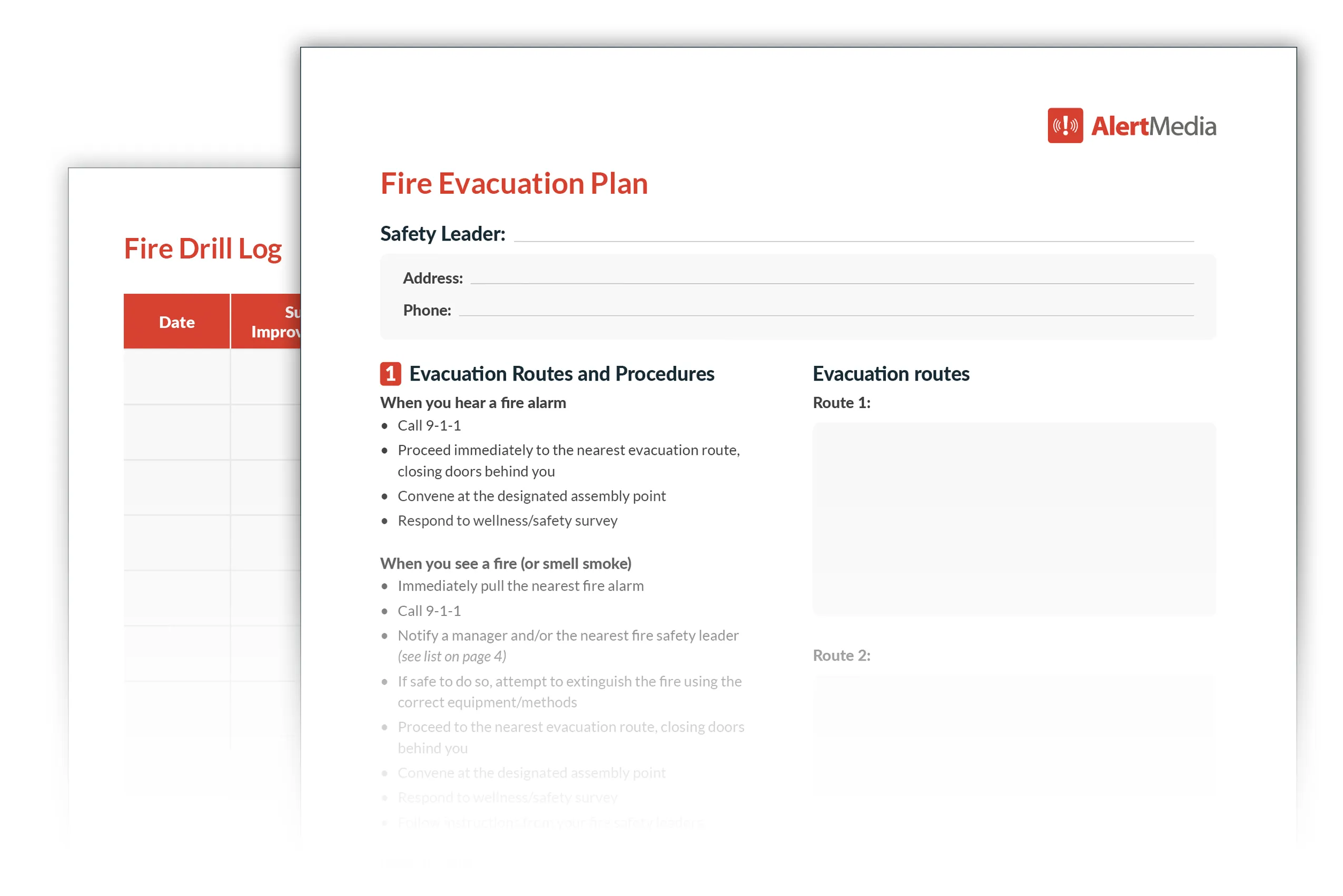
Preview of our Fire Evacuation Plan Template
What Is a Fire Drill?A fire drill is an evacuation simulation that helps prepare participants for a real fire emergency response. Running drills lets people know what to expect and how to respond safely.
During a fire drill, everyone will evacuate the building upon hearing an alarm or announcement and follow the fire evacuation plan that has already been communicated. Fire drills are different from other emergency drills, such as shelter-in-place drills, in that building evacuation is the primary goal, since a fire poses a risk to anyone in the building.
The National Fire Protection Association (NFPA) reports that local fire departments responded to 1.5 million fires in 2022 (that’s one fire every 21 seconds). These fires caused roughly 3,790 civilian deaths, 13,250 civilian injuries, and $18 billion in property damage. Armed with stats like this, your company would be wise to plan regular fire drills. In fact, many landlords and office management companies require organizations to have emergency plans and conduct fire drills in their leases.
And emergency drills are not only to prepare for fires. They train employees on a number of life-saving skills, including:
So, whether it’s tied to your fire safety program, active shooter preparedness, or overall risk mitigation strategy, evacuation skills should be a crucial element of all employees’ training.
This step-by-step video will guide you through the process of conducting a fire drill at work.
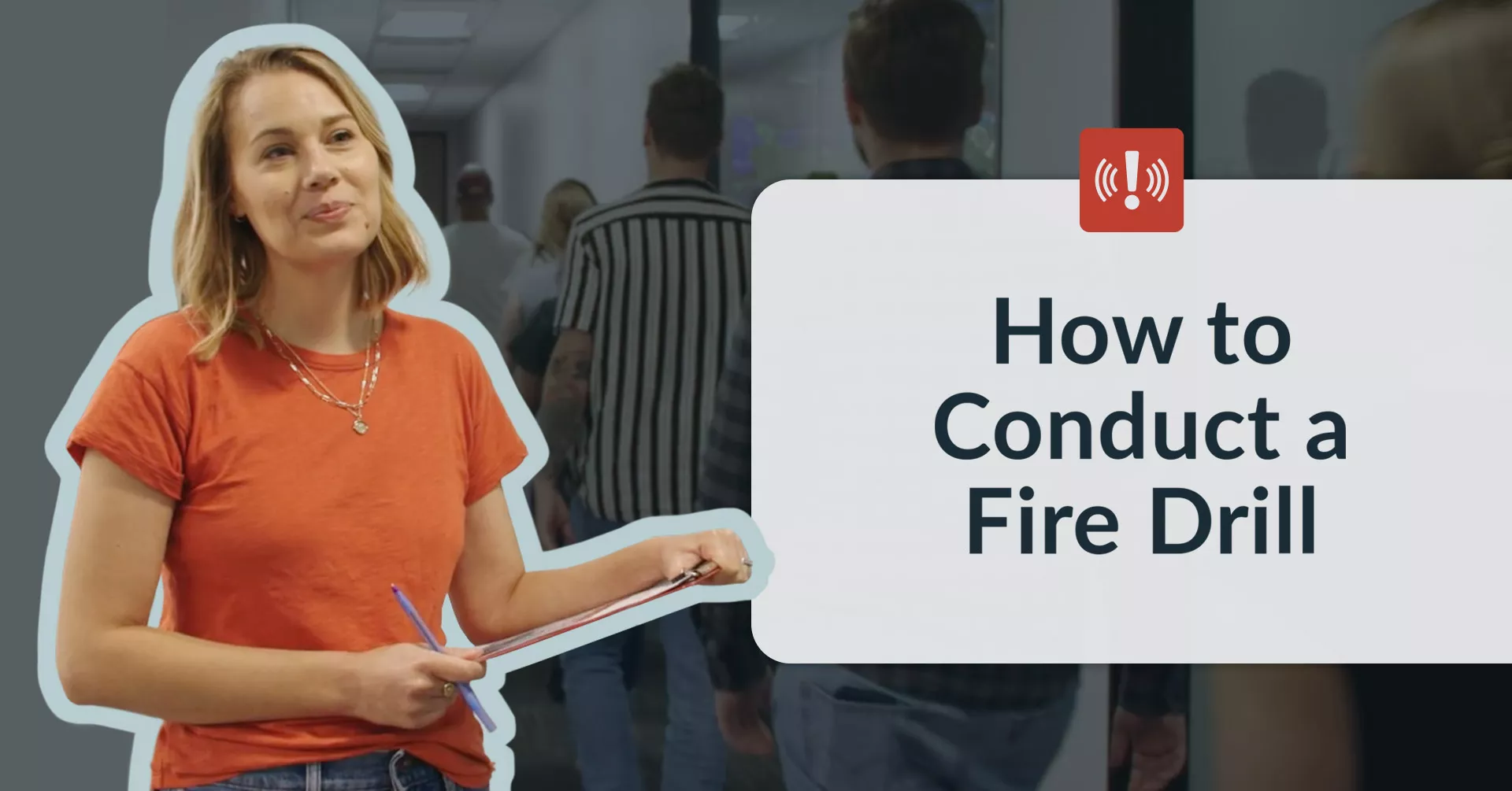
Ask any school-age child about fire drills, and they will probably mention doing a mock emergency evacuation within the last few months. Schools repeat fire evacuation drills often, so the routine becomes a habit and kids know what to do without really thinking about it. Fire drills are a great example of why emergency preparedness professionals typically “hope for the best; prepare for the worst.” There may be a low chance of a real fire in your facility, but it’s still important to have critical information like fire exits, extinguishers, and emergency supplies memorized, so if complications arise, your team knows how to respond.
In a fire emergency, evacuation routes could be blocked or doors could be jammed, and you will need alternative routes. Hearing-impaired employees will need to be notified through a reliable channel other than a fire alarm or audio announcement. A fire alarm could be out of order. Regular fire drills will reveal these issues.
Create a fire evacuation plan for your business with this fill-in-the-blank template."When you’re planning drills, it is important not to have them at a predictable frequency because the nature of fire itself is unpredictable. Employees need to be ready for this irregularity.” — Brian O’Connor, Technical Services Engineer at NFPA
Before sending building occupants scurrying for the exits at the sound of a fire alarm system, make a detailed fire drill plan. This is where a fire drill template can be particularly helpful.
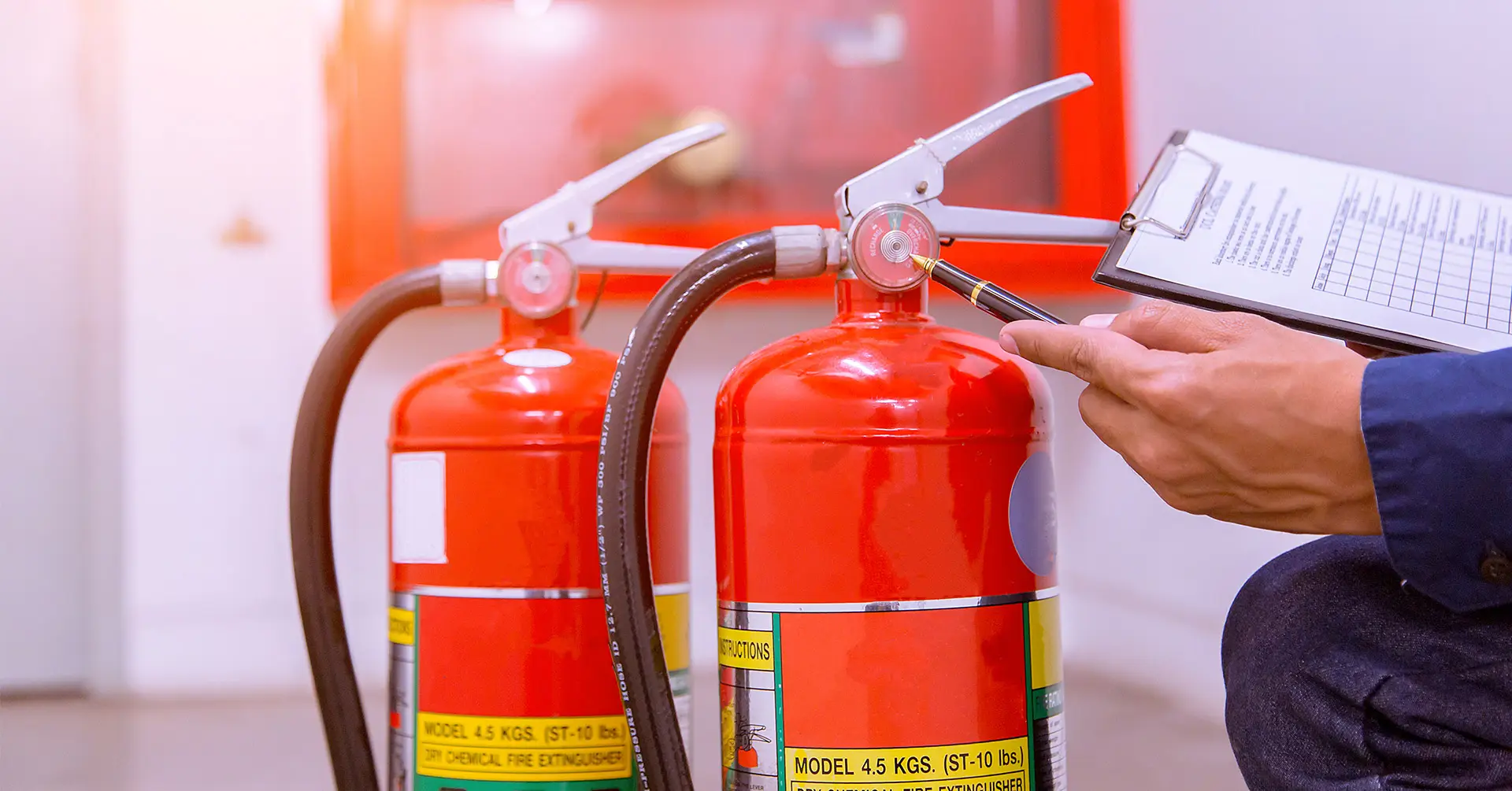
As part of this work, you’ll want to consider various scenarios:
Here’s a look at the high-level steps to create a fire evacuation plan for your business:
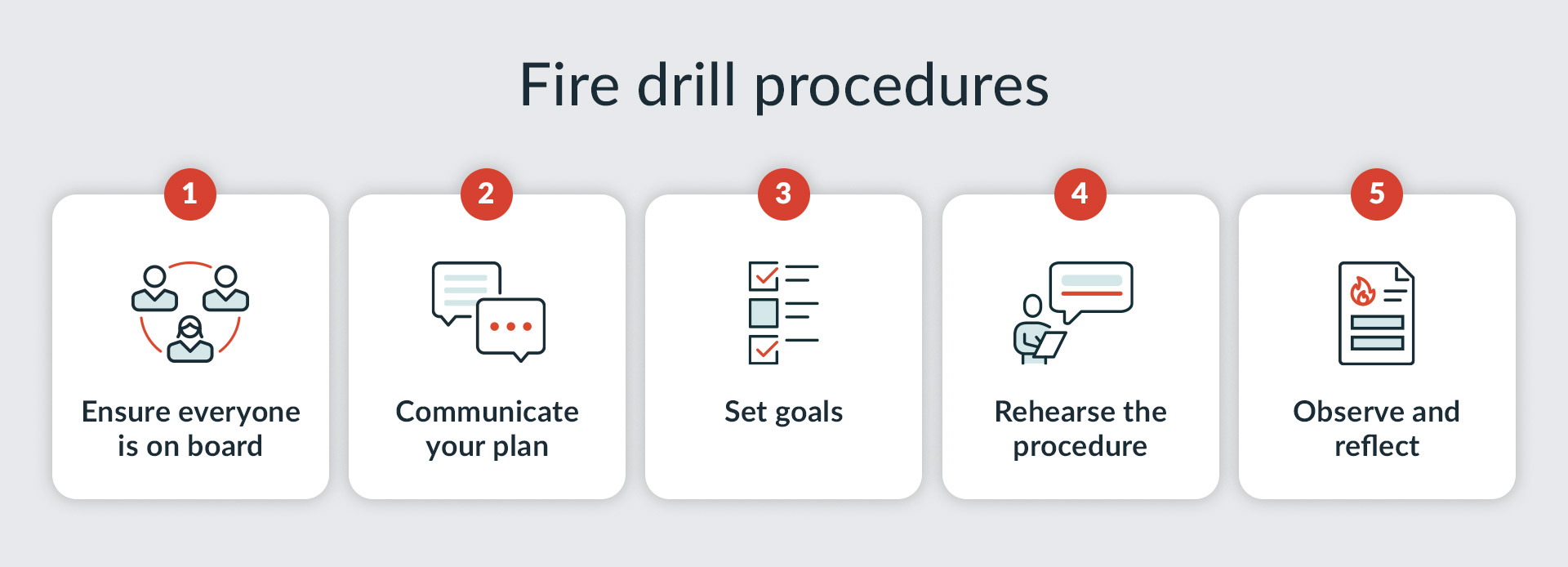
Now it’s time to get down to the drill. Once you have your fire evacuation plan in place, you know the routes. But it’s not as easy as heading to the nearest pull station and pulling the alarm. Everyone needs to be on board when you conduct a fire drill at work.
First, you must ensure the entire fire team (from the warden on down) is trained in the evacuation procedures and ready to make the drill a success.
Second, you need executive buy-in since the drill will take people away from the factory line, their desks, and the warehouse.
Third, and perhaps most importantly, all employees need to understand the importance of the fire drill and fire safety protocols; otherwise, they won’t take it seriously.
The key to a successful fire drill at work is communication. Announce the drill in every place employees will see it, including platforms such as an employee portal, intranet, website, Slack channel, newsletter, and text message. Employee communication software that covers the most common communication channels will make this a lot easier. Mark the time of the drill on the company Outlook or Google calendar. Include information about the fire team and their roles, orderly evacuation routes, and expectations for the fire drill procedure and participants’ behavior.
“With fire prevention education, some organizations communicate a little too frequently. When it’s talked about too often, it becomes noise and employees are going to tune it out. But on the other end of the spectrum, when it’s not talked about enough, you can’t accomplish your safety and prevention goals. So, finding a middle ground for that is key.” — Brian O’Connor, Technical Services Engineer at NFPA
Here are a few examples of communication templates you can use for your fire drill. These can make notifying employees of an upcoming drill quicker and easier.
A fire drill will be held in the [LOCATION] office on [DATE] at [TIME]. When the alarm sounds, evacuate the building (avoid elevators) and proceed outside.
Are you safely evacuated from the [LOCATION] office? Reply with:
1 for NOT SAFE – still in building.
2 for NEED HELP – out of building.
3 for SAFE – out of building.
4 for SAFE – not in office today.
The fire drill in the [LOCATION] office has concluded. Please return to your normal working stations. If you have any questions about the drill or process, reach out to [FIRE SAFETY WARDEN].
Your fire safety team will want to set goals and standards for the drill. If you include these in your first drill, you can work to improve them in subsequent drills. For instance, if your first drill takes 15 minutes to get all occupants safely outside because you discover people are visiting the restroom or wrapping up calls, you have work to do.
Some metrics to measure:
Conduct rehearsals of increasing complexity. For example, your fire safety leaders could first rehearse “on paper” with a tabletop exercise where they describe the evacuation process to the fire warden. The team should describe their actions during a fire drill and analyze any perceived weaknesses or confusion. After the fire safety leaders understand their roles, they should physically walk through the fire drill.
Next, conduct a full rehearsal with as many of your employees as possible. Large companies may favor doing this by building or by section to prevent business disruptions.
Once your employees have mastered a basic fire drill, your fire safety leaders should design more intricate scenarios. Change up variables within the drill to train employees on how to react when complications arise. For example, by adding obstacles such as closed stairwells, obstructions, and blocked exits, you can simulate a more realistic environment and improve fire safety training overall.
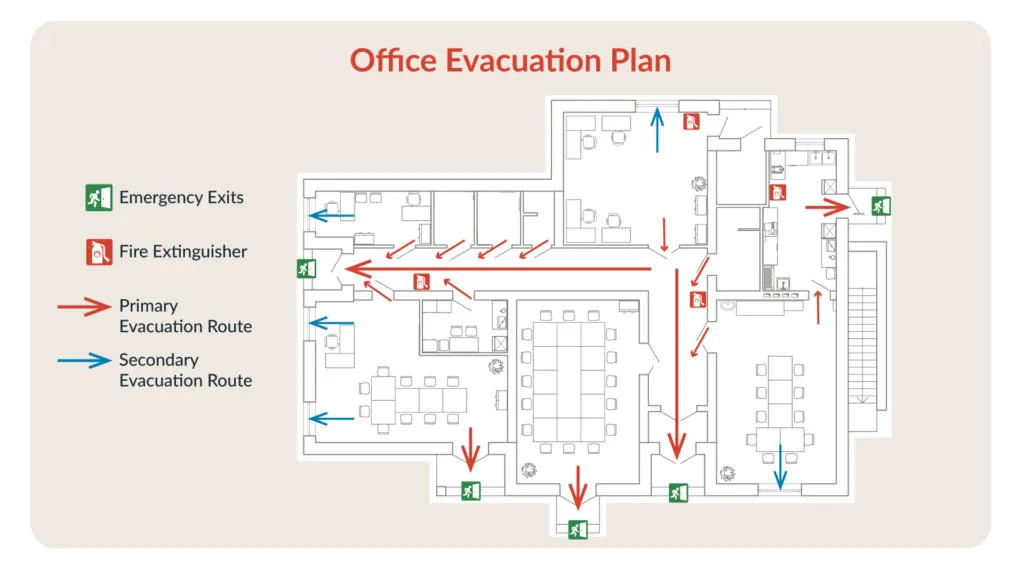
Fire drills are not successful unless every employee is accounted for outside of the building. This crucial step of the drill occurs at the assembly point. The designated area should be a familiar and agreed-upon location that is strategically placed at a safe distance outside the building. For large companies, multiple assembly areas allow for maximum efficiency with a separate fire team leader at every point.
Companies with a mass emergency notification system such as AlertMedia’s can use the survey feature and event pages to track the status of employees who have yet to reach their assembly area. For those who may have lost their cell phones while evacuating, fire team leaders should also use old-school roll call to ensure every employee is accounted for.
In the event of an actual fire, if someone is missing, fire team leaders should follow the predetermined reporting protocol and immediately alert the fire department and the entire fire team.
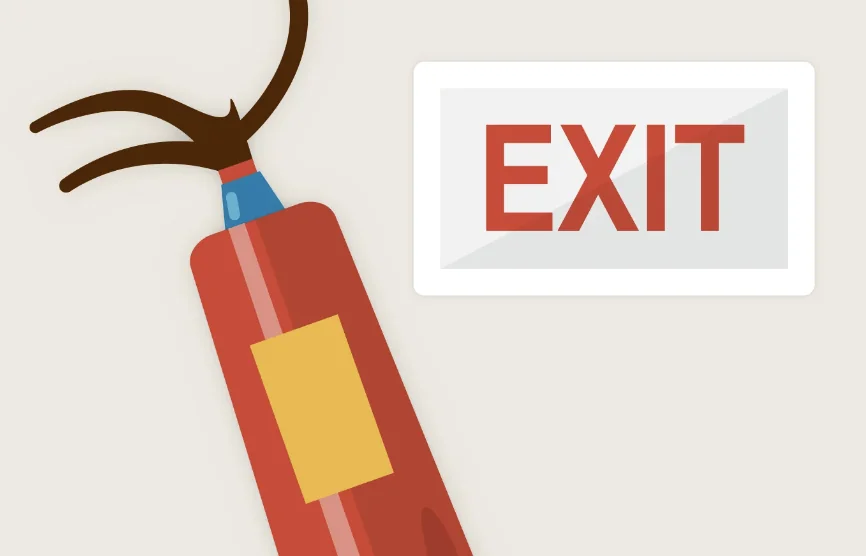
When you conduct a fire drill at work, choose a few people who are not on the fire evacuation team to act as neutral observers. Task them with looking for the following:
After the drill, the observers should conduct a debriefing or put together an after-action report to go over their observations. The meeting location is a convenient place to conduct this debrief since memories of the drill will be fresh. Gather the fire team together to go over what happened and what can be improved for next time. Assess all of the steps above and compile notes into the fire drill report on what worked flawlessly and what was sub-par.
Deep dive into questions such as:
You can also use a fire drill log, such as the one included in this template, to keep track of your fire drill reporting, so you have a record of how often your evacuation drills occur.
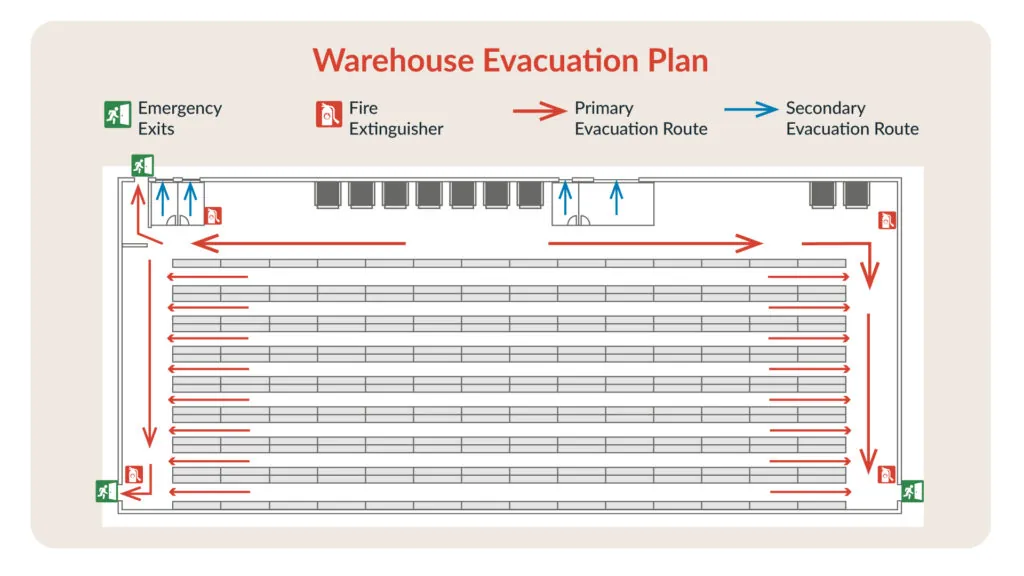
Here are some other things to consider as you plan for your fire drill at work:
Fire evacuations are serious situations to prepare for. And with the health and safety of your team at stake, getting it right by thorough planning is critical. As long as you are clear with your employees about what is expected of them and how it will benefit them, everyone will appreciate the effort to make your safety fire drills efficient and professional. And everyone will be confident about how to exit the building safely in the event of a fire.